
Beta testing is a crucial phase in software development, and like any other phase, it can be fraught with mistakes derailing the success of the testing phase.
To help you identify the mistakes to watch out for, we’ll go through some of the most common mistakes made during beta testing and offer tips on how you can avoid them.
From inadequately setting up the beta to poorly chosen testing tools, we will cover a range of issues that can hinder the success of your beta testing.
Whether you are a seasoned QA tester or a project manager participating in a beta test, this article is sure to provide valuable insights and practical advice.
Table of Contents
Neglecting alpha testing
Beta testing is called beta for a reason.
If you’ve ever wondered why beta is the term for this vital part of testing, you’re not alone.
To understand the answer, you don’t have to know the entire Greek alphabet by heart—it’s sufficient to know that alpha precedes beta and remember that during testing.
Ideally, you’ll conduct alpha testing in-house, before moving on to the beta, because that gives you the chance to evaluate whether the app is stable or even usable.

Neglecting this step is a dangerous move. If you were to jump straight to beta testing, your testers could end up wasting time on testing an unusable product.
For instance, there’s no point in testing how intuitive the UI is if crucial features, such as logging in or searching for items, don’t work.

Get unreal data to fix real issues in your app & web.
Unfortunately, the lack of time and funds forces many companies to skip alpha testing. So, if you do have the means for it, you should assemble a testing team to conduct an alpha on your app.
We know that it may sound like extra work that you could avoid with no consequences, but if you want your beta to run smoothly, then the alpha phase is a preparatory step that helps you increase the efficiency of the following testing stages.
Going into beta testing without a plan
Rushing is a practice that you should generally avoid in all spheres of software development, QA testing included.
Similarly, if you define software testing as simply going through an app and noting what’s wrong with it in no particular order, you could be tempted to make the mistake of improvising your way through testing.
Although you could catch some bugs that way, unstructured beta testing won’t get you far. So, how can you get the most out of it?
The answer lies in creating a beta testing plan.
When you plan your beta testing well, you get more insights and constructive feedback. The following chart, designed by CleverTap, is a good base for designing your own beta testing plan.
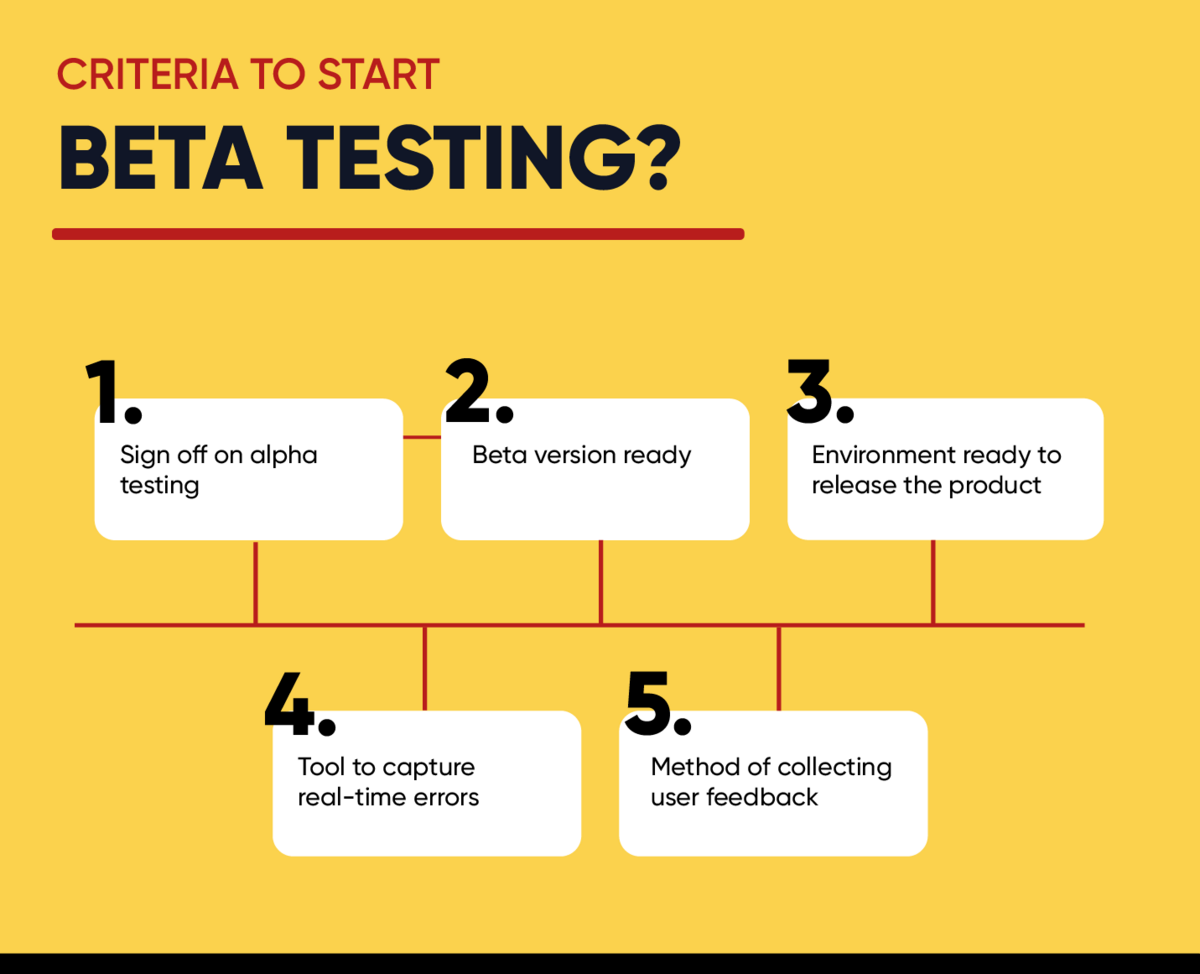
As you can see, the prerequisite for a successful beta is first completing the alpha.
You then have to prepare the test environment, as well as a feedback-collection method, and choose an error-capturing tool (we’ll talk more about that later).
Meeting these requirements will take you one step closer to establishing a plan. It’s also helpful to determine the following testing elements:
- Objective
- Scope
- Test approach
- Schedule
- Budget
Yes, planning the beta delays the testing for a few days and, yes, some betas may have been released without too much planning.
But if you want your beta testing to yield informative and helpful results, some planning is in order, so go ahead and specify what you are going to look for during the beta—and how.
Choosing the wrong beta testers
The beauty of beta testing is that almost anyone can do it. If you were sourcing testers for a plant-identification app, you could find your ideal testers in a nearby garden center chatting between hydrangea shrubs.
However, you should never forget the importance of finding the right kind of testers. That would be a mistake that could seriously hinder your testing efforts.
The essence of the problem is that if beta testers do not match the target audience, their feedback may not be relevant or useful in improving the app.
Let’s take game testing, for example.
If you want actionable feedback about the game you’re developing, you want your testers to be people who are already into gaming, and you can visit specialized communities, such as Alpha Beta Gamer, to find them.

Of course, just because somebody already has experience with game beta testing, that doesn’t make them a good tester for, say, a budget-tracker app.
In order to gain insight into how actual users will receive the app, you have to choose beta testers who closely resemble the target audience, which means that your QA and marketing team will have to put their heads together.
The three crucial user categories from the table below are a good starting point for that, showing you what to ask yourself when choosing the testers.
| Demographics | Who are they? What’s their gender, education, and income status? |
| Psychographics | What do they want in an app? What are their values, goals, and interests? |
| Technographics | What kind of computers and phones do they use? What other apps do they use? |
Once you define your audience, you’ll be able to find beta testers who can provide relevant feedback.
So, before you start recruiting testers, double-check that they are representative of the app’s target audience, their needs, challenges, and preferences.
Recruiting too few or too many beta testers
As we’ve seen, the characteristics of the testers are essential for beta testing. However, your job is not finished when you identify the type of testers to participate in the beta.
The number of testers is an important detail, too.
Imagine a scenario where you opened a public beta and created an invitation that looked something like this.

Would your team be able to handle the reviews of thousands of testers? On the other hand, could you gather sufficient feedback if you limited the number of testers to ten?
As you can see, it’s important to find the balance between recruiting too few and too many testers.
Having too few testers means insufficient feedback to test the app and understand users’ needs, leading to a released app that fails to meet expectations.
On the other hand, recruiting too many testers results in overwhelming feedback, making it difficult to prioritize and resolve issues, causing confusion in the bug-squashing process.
Bear in mind that the objectively ideal number of testers doesn’t exist. Instead, the number depends not only on your budget, but also on the type of app you’re testing.
Ran Rachlin, the co-founder and CEO of Ubertesters, suggests the following numbers:
| Small, independent projects | 4 or 5 beta testers |
| Casual app startups (such as Quick Notes or Flash Player) | 10 to 25 testers |
| B2B apps | 70 to 300 testers |
| Game apps | 200 testers and more |
So, you can find which of these categories matches your app’s type the best, and you’ll have a jumping-off point for determining the size of the testing team.
To sum up, beta testing is a collaborative process.
While getting as much feedback as you can may sound tempting, don’t forget that the principle of the more, the merrier doesn’t apply to testing.
With that in mind, you should identify the type of your project and choose the number of testers so that you can actually examine all the feedback you receive.

Failing to keep beta testers engaged
Have you ever started filling out an online survey and given up halfway through just because you were bored?
If you have, then you understand how easy it is for beta testers to drop out of a project. That’s precisely the consequence of the next mistake on our list: not keeping the testers engaged.
Backing out of the beta is not the only way in which idle testers can thwart your testing efforts.
Those who remain will not put as much effort into beta testing, so their output will be poor, and you won’t be able to improve your app.
Because of that, some companies that outsource beta testing offer incentives and perks, such as vouchers, gift cards, or access to premium features.
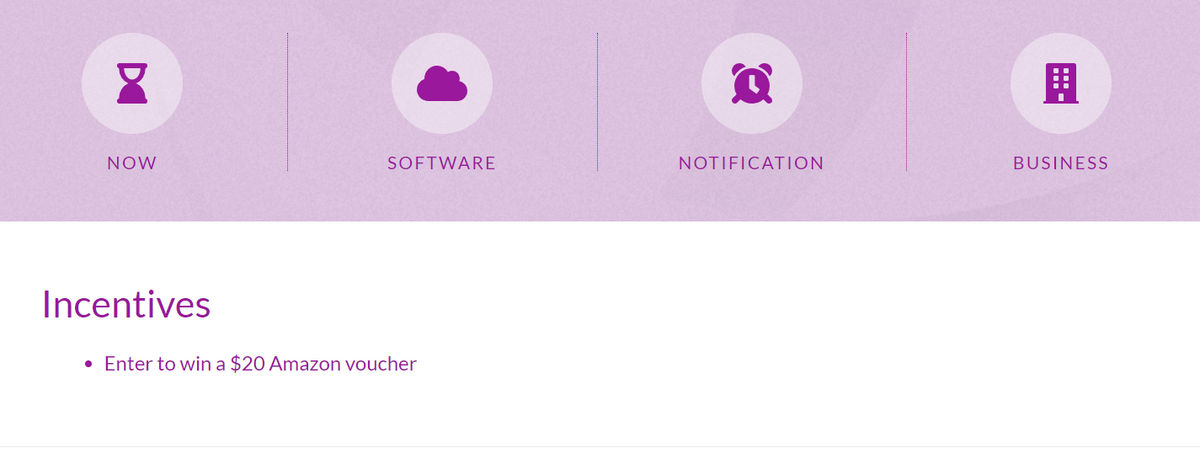
Incentives are not only about gift cards, though.
It’s also about the feeling that you value the testers’ opinions, and gifts are just one way of showing it, as attested by this tester’s experience:
I was part of a group of beta testers for a new software that promised us thousands of dollars in value, including the most premium monthly membership for free. I felt valued, and therefore I put a lot of effort into being a reliable beta tester.
Of course, it’s also crucial to keep in touch with testers during the beta.
Monitoring participation will help you notice if any of the testers have fallen off track, in which case you can contact them and use positive communication to get them back to contributing.
All in all, if you want to avoid incomplete or inaccurate feedback, you have to ensure that you keep the testers interested and involved throughout all stages of the beta testing.
Using the wrong tools during beta testing
Choosing the right tools for beta testing is half the battle. Consequently, using the wrong tools is a mistake that makes the testing process inefficient, unreliable, and expensive.
Seeing as finding and eliminating bugs is the main objective of beta testing, your search for the perfect tech stack should start by selecting the right reporting tool.
A mistake in this part of the process would be to go with the tools that everybody is familiar with, such as emails or spreadsheets.
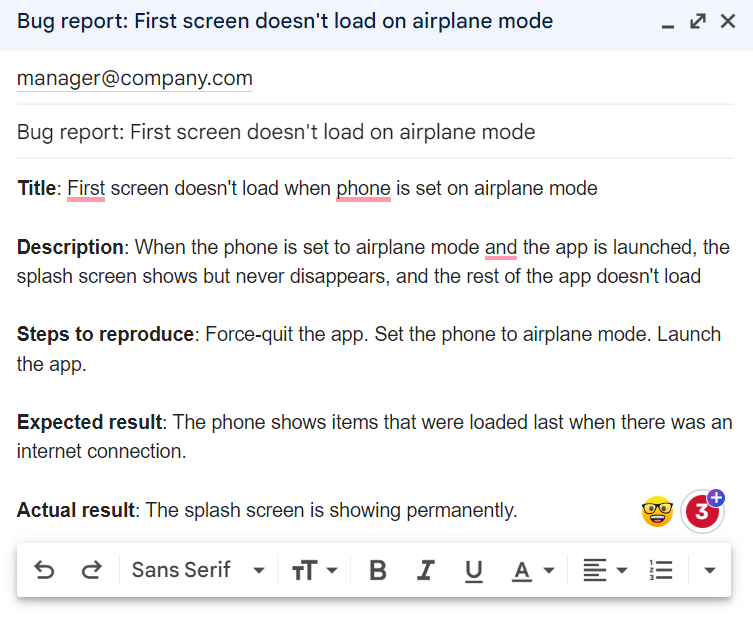
While you technically can send and receive bug reports via email, like in the image above, the method is unsustainable.
It could work if you had one tester and one developer.
However, beta tests are usually bigger projects, and it’s difficult to track all these reports across multiple platforms, especially those that were never intended for bug reporting.
Even if you provided testers with appropriate bug-reporting templates, managing such a high number of reports and coordinating them with your project-management solution would be extremely laborious.
Instead, you need a reporting tool that testers can use with ease, and that sends relevant data directly to managers and developers, such as Shake.
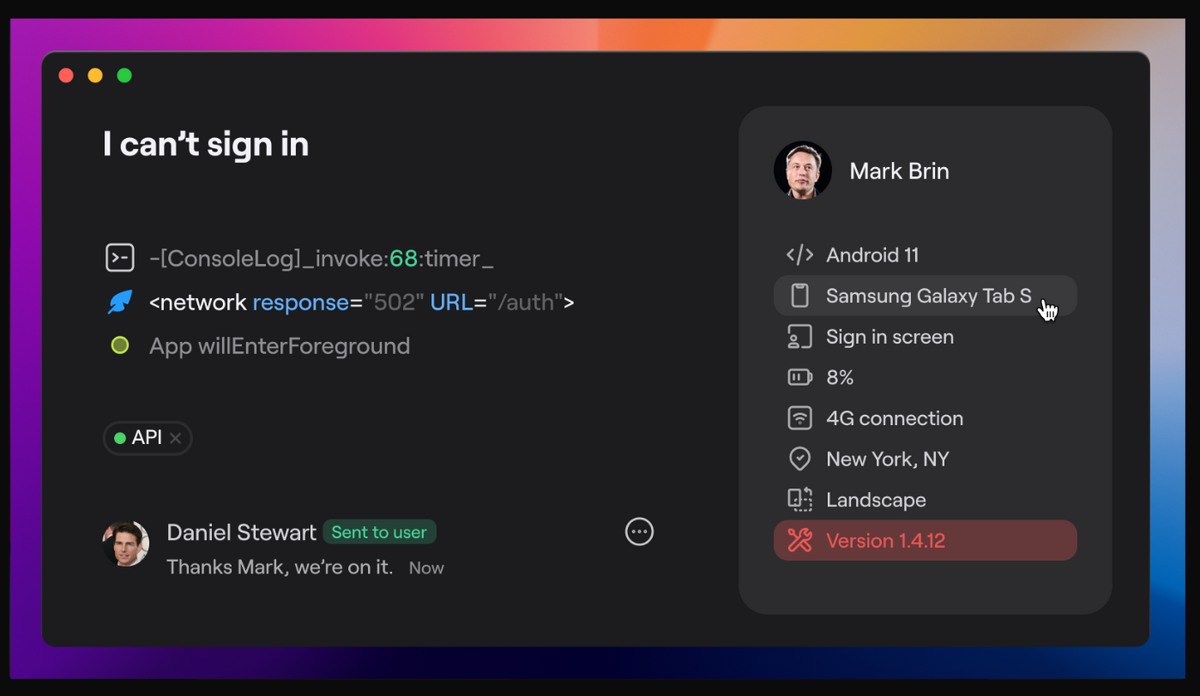
Shake is an excellent tool for beta testing because it lets testers report bugs straight from the app they’re testing.
It automatically attaches all the data that developers will need to find and fix a bug to every bug report.
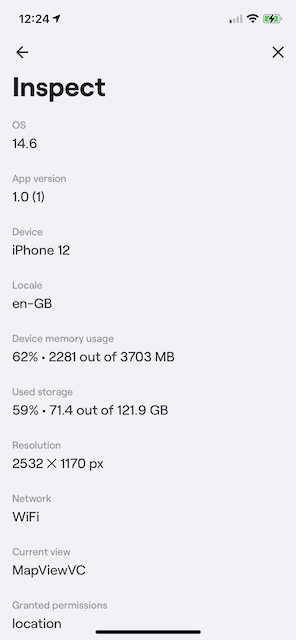
This feature also remedies the mistake we’ve discussed previously, the one about disengaged testers.
When testers don’t have to waste time manually typing the details about software and hardware specifications, they can continue using the app with fewer and shorter interruptions, which keeps the testing process running smoothly.
Lastly, Shake integrates with other QA, project management, and development tools, such as Jira, GitHub, and DevOps—there’s no information loss caused by switching between the tools.
So, if you want a well-structured beta testing process, you shouldn’t focus solely on the app and neglect the importance of selecting the best bug-reporting tools.
The tools are as critical as the app itself because they are frequently used, and finding the best ones is in your best interest.
Not tracking important beta test metrics
Guesstimating is a frowned-upon practice in software development, and yet some companies still make the mistake of not basing their decisions on actual data.
To avoid that mistake, you should define the metrics you’ll track during beta testing and decide how you’ll measure them.

Very handy for handling user feedback. CTOs, devs, testers – rejoice.
Think about it: descriptive feedback is certainly helpful, but it has a different value depending on whether it comes from a user who has spent two hours on the app, or from a user who has only used the app for fifteen minutes.
That’s why testing metrics usually cover session intervals, session duration, session depth, and more. Here’s what session analysis looks like on UXCam, a tool for mobile app analytics.
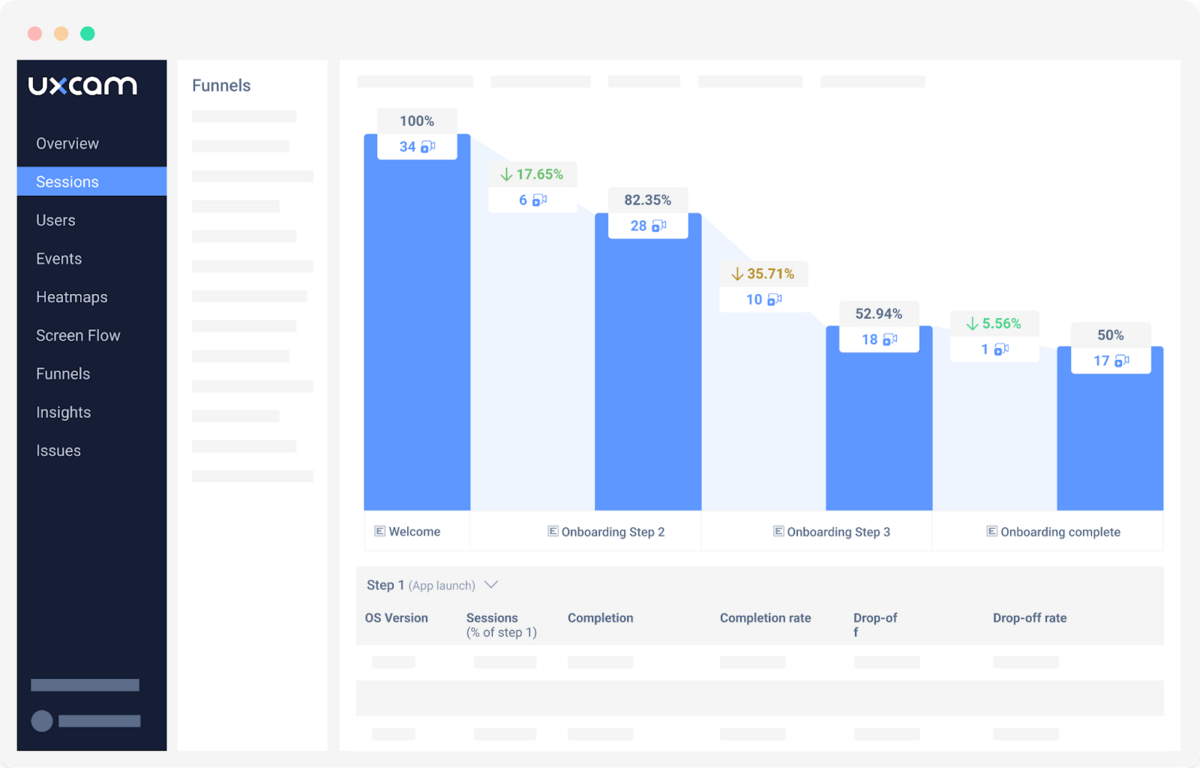
User engagement, which you measure by analyzing sessions, is just one of the areas you should measure during the beta.
You can find more metrics categories in the table below, and see what you can track to measure those.
| User engagement | Number of sessions, session duration, active users, retention, churn, the use of app’s features |
| User feedback | Users’ suggestions, opinions, and complaints |
| User behavior | How users interact with your app, what paths they take |
In addition to analyzing how testers use the product, you can also measure the success of the beta testing itself.
You can do this by tracking the number of issues that were found and fixed.
Also, you can inspect the number of logins, compare it to the number of feedback contributions, and see whether there’s room for you to improve how engaging the beta testing process is.
Conclusion
As you can see, beta testing is not necessarily a foolproof endeavor—there are many pitfalls and errors that you can unwittingly commit.
Fortunately, you can avoid these mistakes with proper planning and execution.
And by keeping the mistakes in mind and implementing effective beta testing strategies, you can ensure a successful launch and deliver an exceptional product to your customers.





